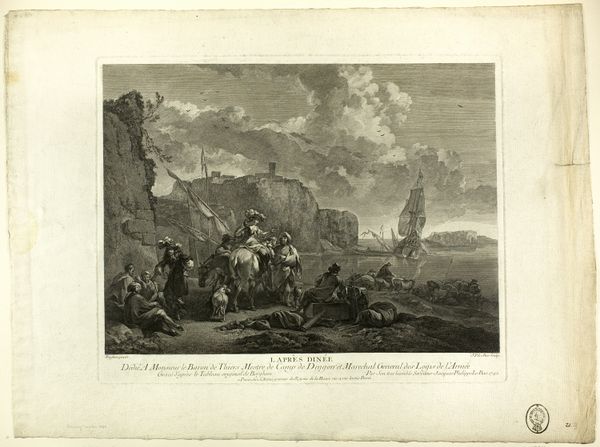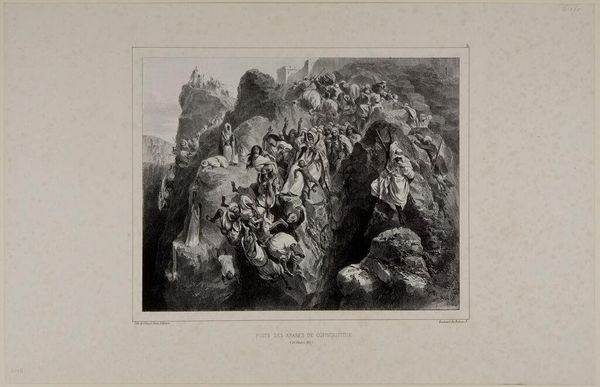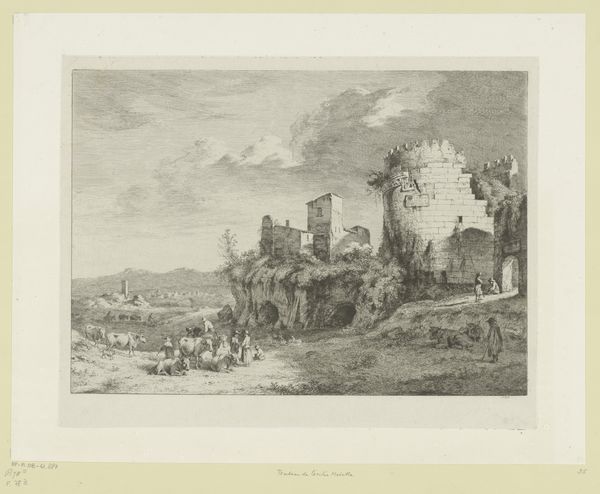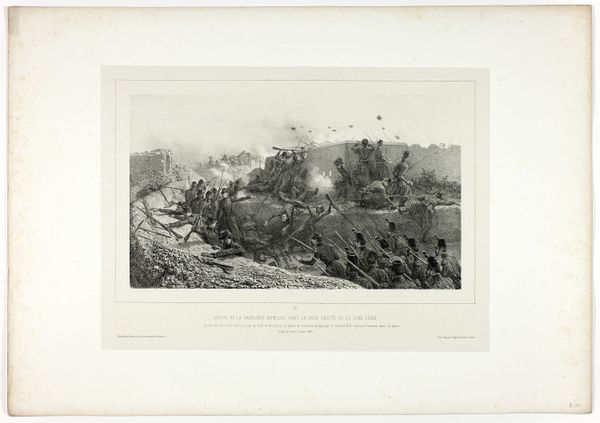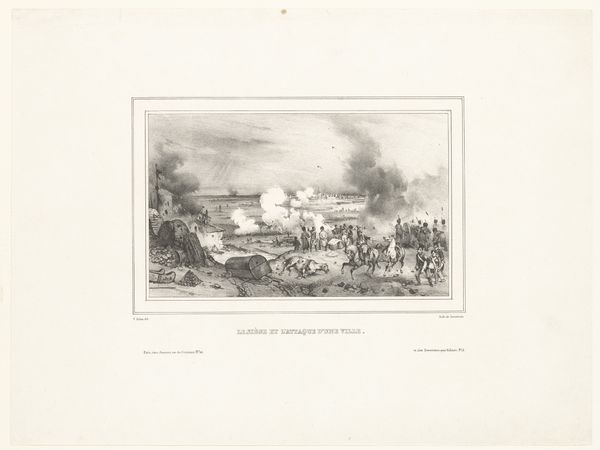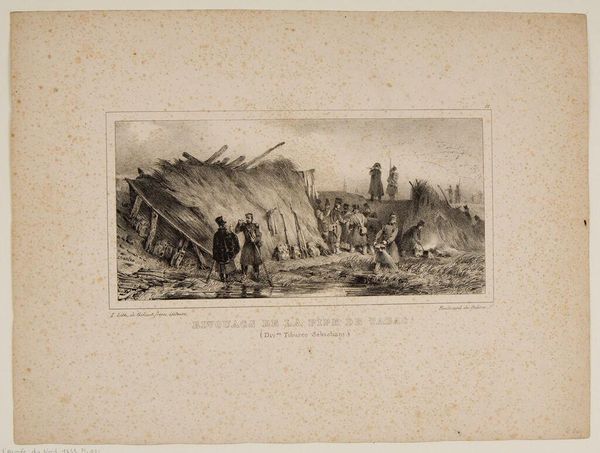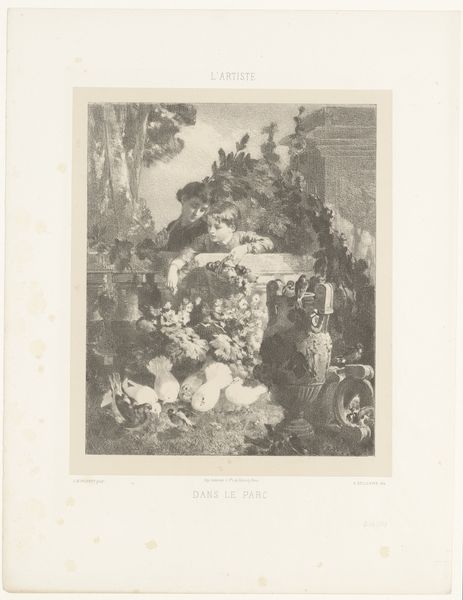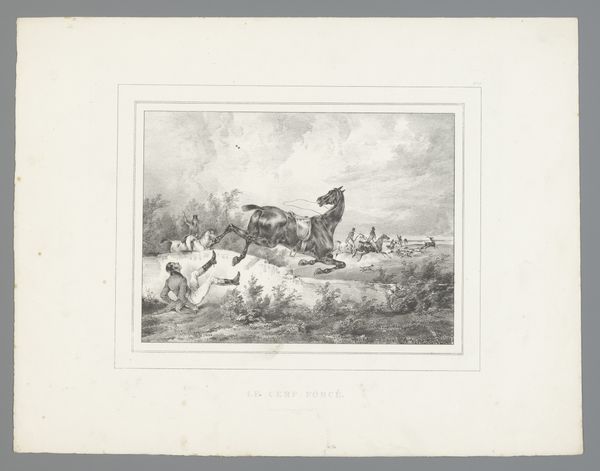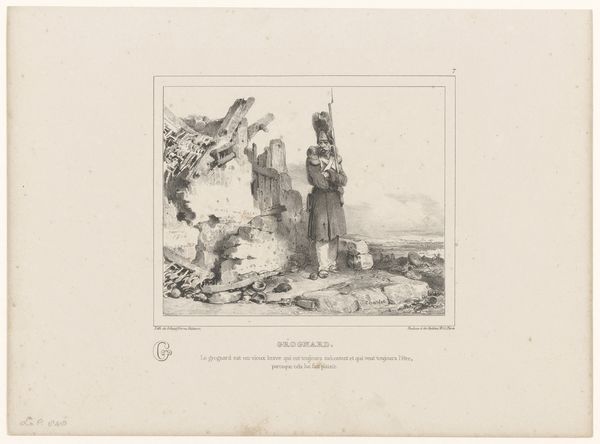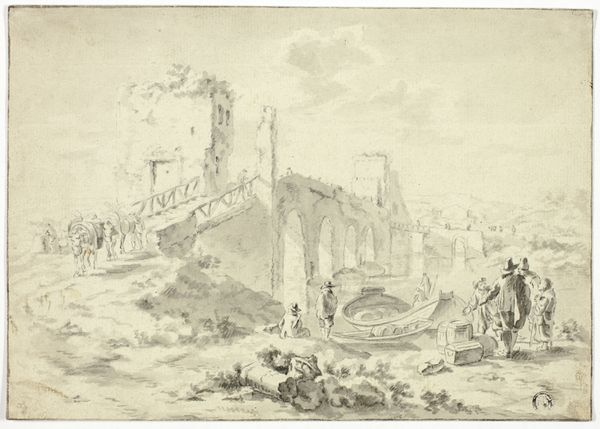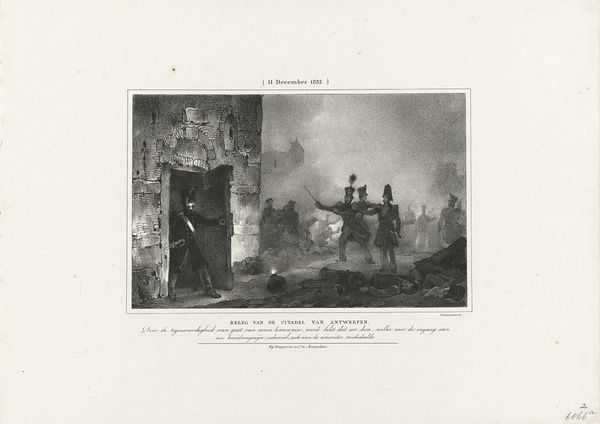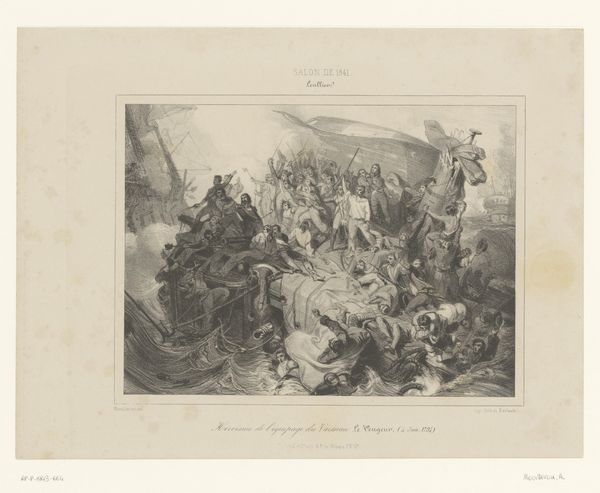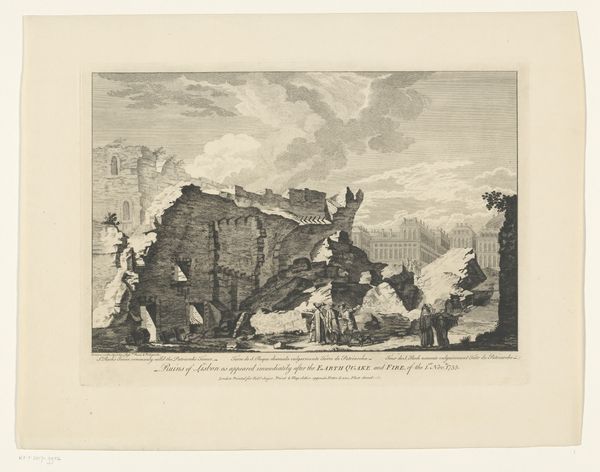
drawing, lithograph, print, paper
#
drawing
#
lithograph
# print
#
pencil sketch
#
landscape
#
paper
#
romanticism
#
cityscape
Dimensions: 198 × 259 mm (image); 282 × 389 mm (sheet)
Copyright: Public Domain
Curator: Welcome! We are standing before Richard Parkes Bonington's lithograph, "Château d'Arlay," which captures a vista with figures in the foreground. Editor: My first impression? Dreamy and slightly melancholic. It's like looking at a faded photograph from a cherished memory. Curator: That resonates with the Romantic sensibility Bonington often expressed. You see how the ruin itself, the château, dominates the scene. It stands as a relic of a bygone era. Bonington's decision to feature it aligns with Romanticism’s fascination with history. Editor: It's got this fantastic, crumbling grandeur vibe! I love the human element, though; figures at the base of it are like small brushstrokes—adds depth, suggests a narrative, even. Makes you wonder about their lives in the shadow of this place. Curator: Indeed! And Bonington wasn’t just depicting any chateau; Château d'Arlay, even now, is emblematic of France's rich aristocratic past, which would’ve had cultural implications even at the time of its creation. These types of images catered to an expanding art market hungry for landscapes tied to stories and heritage. Editor: Thinking about it, I love how hazy everything is. The contrasts aren't stark; instead, it blends it, like mist rolling through time itself. Lithography gave Bonington this awesome opportunity to play with tonal gradation. Look how subtly he modeled form! Curator: Yes, Bonington excelled at manipulating the lithographic crayon to create that atmospheric perspective. We see Bonington capturing a particular mood tied directly to that Romantic period – the picturesque. It allowed artists a medium to disseminate their vision of historical locales more widely and cheaply. Editor: Cheap might sell the artist short. To me, "Château d'Arlay" isn't just history; it's an emotionally charged place. It's that tug you feel when something beautiful begins to disappear. Curator: A compelling point! It illustrates the intersection of social forces, individual genius, and aesthetic movements at play in early 19th-century art. Thank you for those emotional insights, as they deepen our appreciation. Editor: Thanks to you, I'm now off to find out if Château d'Arlay had any juicy scandals to justify its picturesque decline! It was a delight exploring the picture and cultural echoes together.
Comments
No comments
Be the first to comment and join the conversation on the ultimate creative platform.
